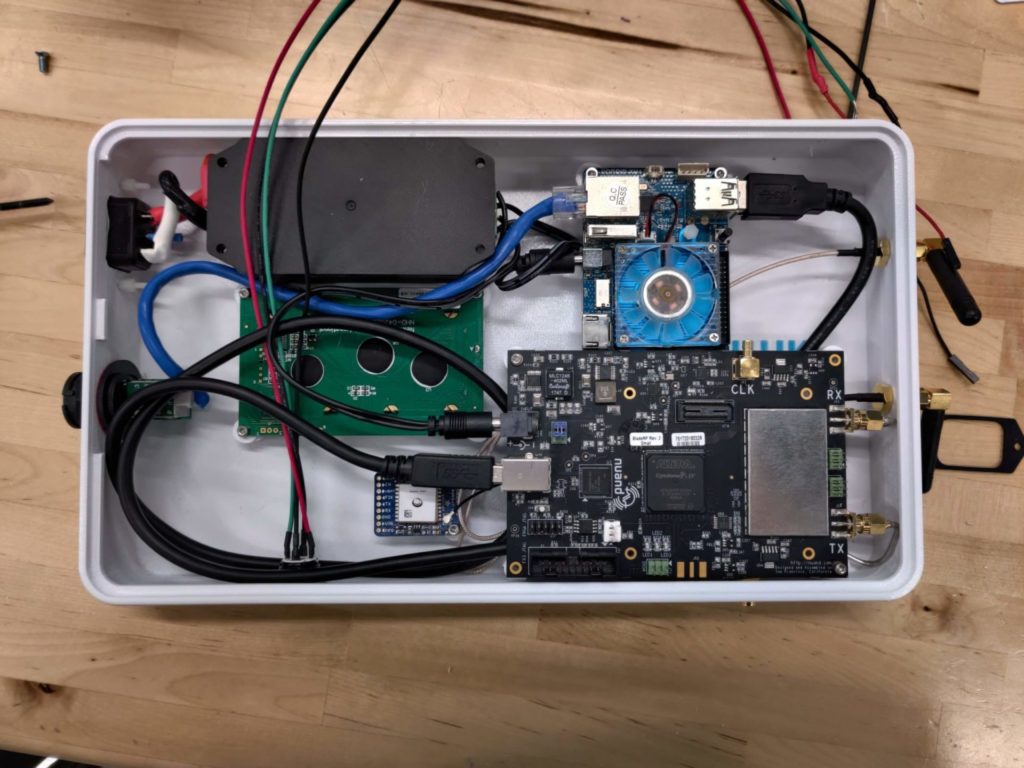Elevate your design and manufacturing processes with Autodesk Fusion
The New Possible podcast sheds light on the future of making things – from COVID-19 ventilators to sustainable motorcycles. Each episode tells the story of how a company unlocked its new possible using Autodesk Fusion 360. Follow along as we dive into the details behind some of the most exciting innovations. In this episode, we chat with Beamlink about the current barriers to connectivity following natural disasters and why its device, the Beamlink S1, is much-needed globally. Listen to the New Possible podcast on all major hosting platforms, including Apple, Amazon, Spotify, and Google.

Before getting started, we want to acknowledge and give a heads up that this episode might trigger people who have been affected by a natural disaster.
There’s only so much preparation individuals, cities, and governments can do before a natural disaster strikes. It’s often hard to predict how destructive floods, tsunamis, earthquakes, tornados, and hurricanes will actually be. Sometimes they happen without a clue, leaving areas devastated and thousands of people left without resources.
If there’s a tornado coming, experts tell you to seek shelter below ground. If there’s a flood coming, they advise you to seek high ground. But what comes after the disaster hits? What are you supposed to do when you follow protocol, but you emerge from shelter with no phone, no money, and no power — the connectedness we’ve become reliant on? How about if you can’t get in touch with a family member or need immediate medical assistance? Now imagine what it would be like to lose internet access and phone signal for months following a disaster. Unfortunately, this is the reality for many countries.
Beamlink Provides a Connectivity Solution
Today’s guest is Mateo Abascal, CEO of Beamlink, a startup that aims to improve global Internet access and significantly decrease network downtimes following natural disasters. Beamlink’s portable device, Beamlink S1, is meant to be purchased by governments and NGOs. Cities and towns can deploy them in areas that have lost signal, mainly rural areas in low coverage zones. The device self-calibrates and self-configures with the push of a button so that anyone can set it up. Optimized for low power use, it can operate off the grid with only a solar panel and a small battery. It’s reverse compatible with most phones and bypasses SIM cards to provide coverage to everyone.

The current solution to fixing down networks is sending teams of engineers to repair existing towers. Another solution is trucking in monolithic units that require multiple people, accessible pathways, and an immense amount of power to use. This solution is expensive and often takes years to complete. Beamlink’s website gives Hurricane María as an example. The hurricane struck Puerto Rico in 2017. As of 2020, though, areas of the island still lacked reliable cell service.
How Does Beamlink Help?
Not to mention, cell towers cost between 300 thousand and 1 million dollars. In contrast, one Beamlink S1 costs $1500. The Beamlink S1 weighs only 8 pounds, and one backpack can easily hold 15 of them.
Mateo and his team primarily built Beamlink with off-the-shelf components, so the average person can repair or upgrade it as needed. Deploying new devices after a disaster is an unpredictable process, so the Beamlink S1 can handle all of the rebuilding conditions after a catastrophe.
For this episode, The New Possible sat down with Mateo to learn more about Beamlink. We cover his team’s journey from school to founding a company, the current barriers to working Internet and cell networks following natural disasters, and why the Beamlink S1 is a much-needed device globally. Oh, and how can we forget — Mateo’s process designing the device in Fusion 360.
Listen to the entire conversation above via Apple, Amazon, Spotify, and Google. Stay tuned for the next episode of The New Possible podcast, which will drop next month.
Want More of The New Possible? Check Out Every Episode Below
Episode 1: fuseproject Goes Medical to Combat COVID-19
Episode 2: Vortic Watch Co: Not Your Grandpa’s Pocket Watch
Episode 3: CAMplete Brought 5-Axis Machining Into the 21st Century
Episode 4: MIT Space Exploration Initiative Designs Everyday Life in Space
Episode 5: One Click Metal is Democratizing Metal Additive Manufacturing
Episode 6: Choose Your Own Adventure with CW&T

